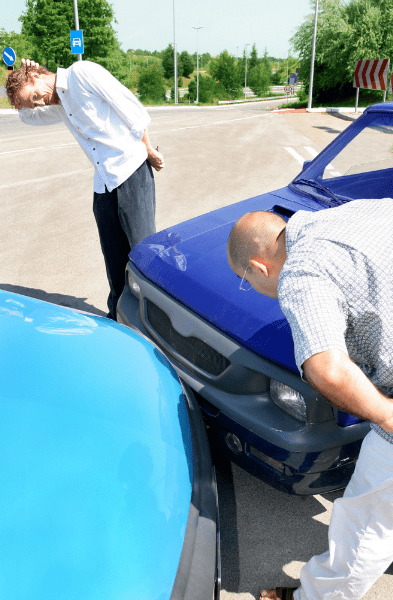How fault and liability is determined in an Ohio car accident

In many car accidents, it’s pretty clear who’s at fault, so the at-fault driver’s insurance company accepts liability and begins paying the other party’s medical bills and/or damages. But sometimes, accidents happen and for various reasons, it’s impossible to determine who’s at fault.
This article gives you a real-life example of a customer where fault of an accident could not be determined and how Ohio car insurance worked through the process. In the state of Ohio, this example is pretty typical of the process.
First the accident…..
Our customer (let’s call her Mary) was backing out of a parking space in the parking lot of a restaurant. She was nearly out of the space getting ready to straighten the wheel, when out of the corner of her eye she noticed a vehicle backing down the lane. The vehicle did not stop and collided with Mary’s vehicle.
The two drivers exchanged contact and insurance information.
Because the incident happened on private property, no police were called. Law enforcement usually shies away from taking accident reports that occur on private property, and many have a policy in place where they simply won’t do it. After the information was exchanged, witnesses were asked to give a statement, but no one came forward. Both parties left and filed claims with their respective insurance companies.
How fault and liability is determined in an Ohio car accident…..
But first, we need to define a CRITICAL term so the rest of this article makes sense. The majority of insurance liability claims are paid based on the concept of negligence. “Negligence” is defined as the failure to exercise the degree of care required of a reasonable and prudent person in any given circumstance resulting in injury or damage to another. As a general rule- negligent = at fault (and thus legally liable). Not negligent = not at fault (and not legally liable).
Back to the accident
Each person was contacted by their respective insurance companies to give a statement. They were also asked by the other insurance company to give a statement (this is all standard procedure for any accident). Each person said the other was at fault. In the event of conflicting stories, and no evidence to prove otherwise, each insurance company denied liability.
The final outcome of this claim is that each insured had to seek coverage from her own company to pay any medical expenses or damage to her vehicle. A note: collision is the coverage that would repair or replace the damaged vehicle, subject to the deductible. Medical payments coverage can be used to help pay medical bills.
Does this stink? Of course it does. But an insurance company is only obligated to pay when their insured is negligent (i.e. legally liable) for bodily injury or property damage to someone else or something else. Not negligent = not at fault = no payment.
So your only solution is to use your own policy to fix your car and/or pay your medical bills. So what if you don’t have collision coverage? Then you’d be stuck paying for repairing your car out of pocket. And no medical payments? Then your health insurance would take over. In the absence of health insurance, you’d pay out of pocket.
How Ohio’s law of comparative negligence helps to determine fault and liability in a car accident
Ohio has a comparative negligence law. Comparative negligence allows for a person to recover damages as reduced by the person’s own percentage of negligence. In Ohio, if a party is more than 50 percent at fault, recovery is not allowed. In this example, since fault could not be determined, each person was deemed to be equally at fault. With two parties that equals 50% responsible- another reason that each person’s insurance takes care of that person only.
What you need to learn from this example
If you’re involved in an auto accident where there is no clear indicator of who’s at fault, then chances are good that your own car insurance will have to come to the rescue. So you need to make sure you have the best Ohio car insurance you can. That means high liability limits and deductibles you are comfortable with. Because if you have to use it you want it to be there to pay your medical bills and repair your vehicle. These type of accidents happen more often than you may think.







